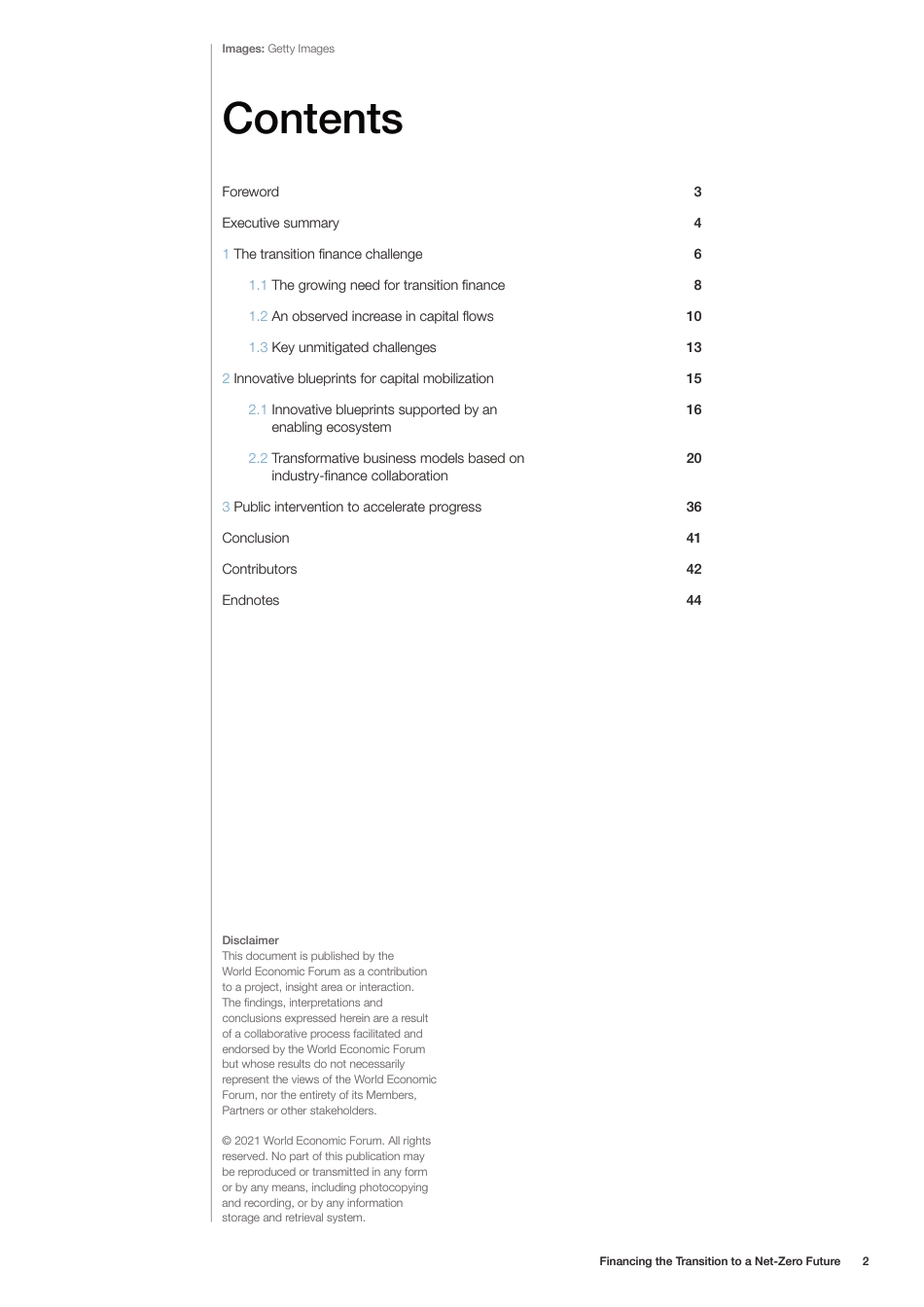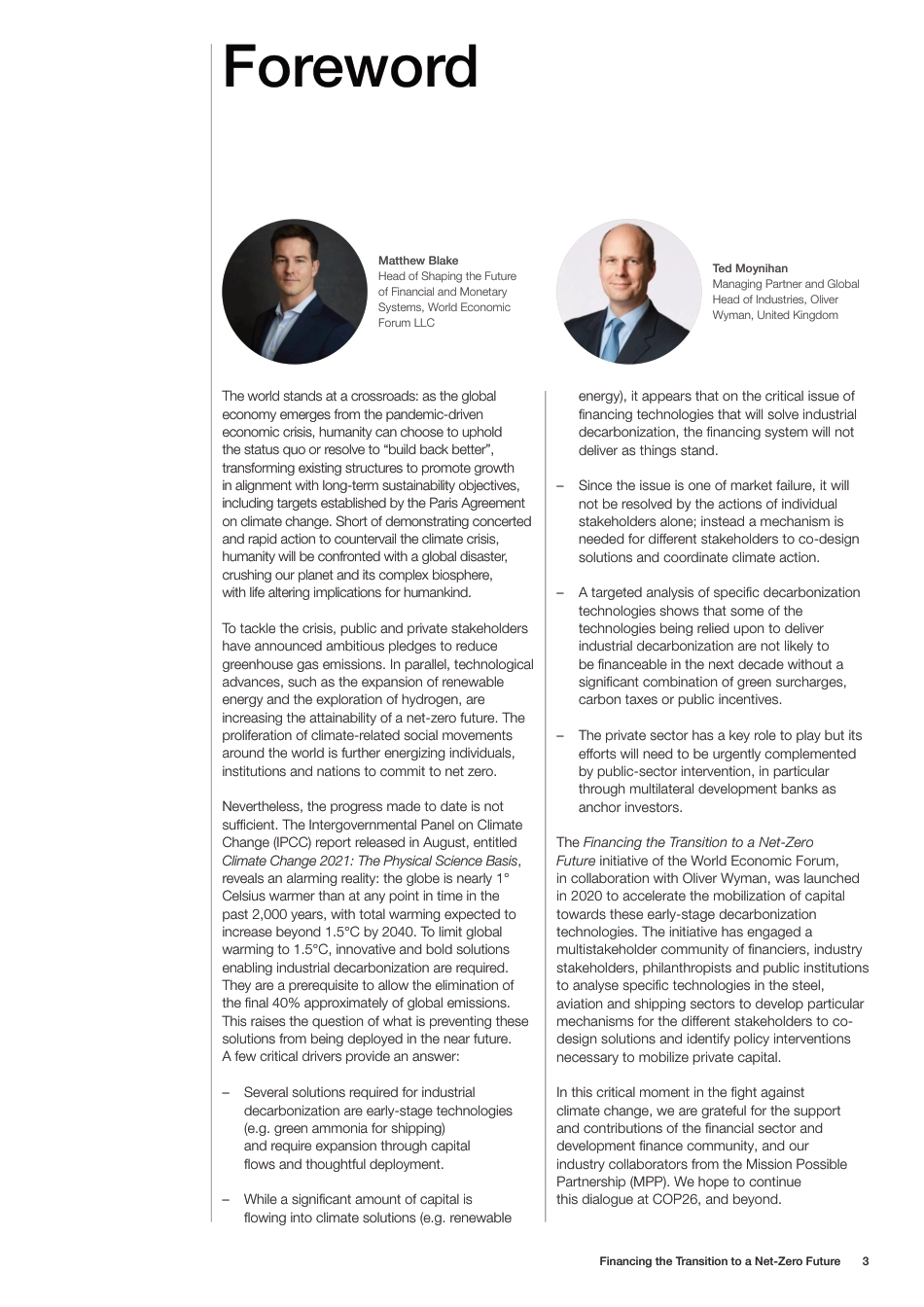Financing the Transition to a Net-Zero FutureI N S I G H T R E P O R TO C T O B E R 2 0 2 1In Collaboration with Oliver WymanContentsForewordExecutive summary1 The transition finance challenge1.1 The growing need for transition finance1.2 An observed increase in capital flows1.3 Key unmitigated challenges2 Innovative blueprints for capital mobilization2.1 Innovative blueprints supported by an enabling ecosystem2.2 Transformative business models based on industry-finance collaboration3 Public intervention to accelerate progressConclusionContributorsEndnotes346810131516 20 36414244Images: Getty Images© 2021 World Economic Forum. All rights reserved. No part of this publication may be reproduced or transmitted in any form or by any means, including photocopying and recording, or by any information storage and retrieval system.Disclaimer This document is published by the World Economic Forum as a contribution to a project, insight area or interaction. The findings, interpretations and conclusions expressed herein are a result of a collaborative process facilitated and endorsed by the World Economic Forum but whose results do not necessarily represent the views of the World Economic Forum, nor the entirety of its Members, Partners or other stakeholders.Financing the Transition to a Net-Zero Future2ForewordThe world stands at a crossroads: as the global economy emerges from the pandemic-driven economic crisis, humanity can choose to uphold the status quo or resolve to “build back better”, transforming existing structures to promote growth in alignment with long-term sustainability objectives, including targets established by the Paris Agreement on climate change. Short of demonstrating concerted and rapid action to counterv...



